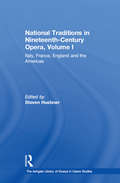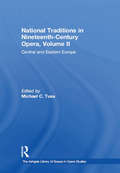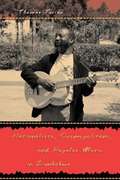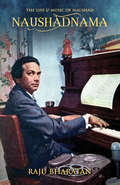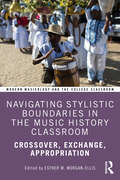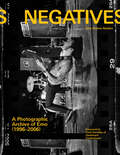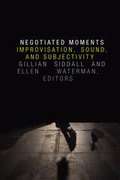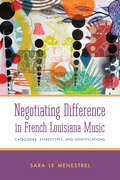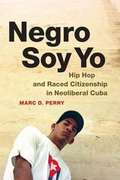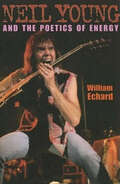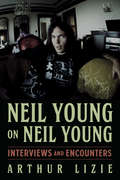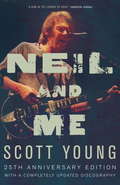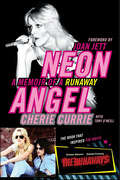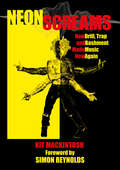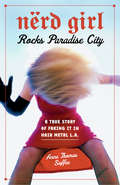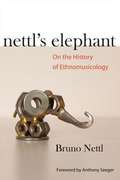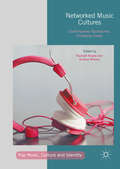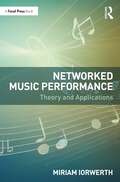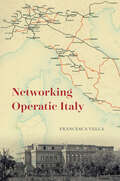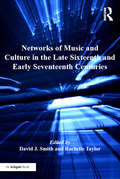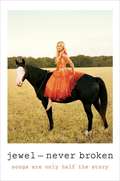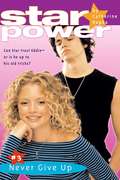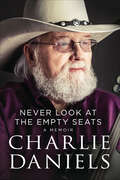- Table View
- List View
National Traditions in Nineteenth-Century Opera, Volume I: Italy, France, England and the Americas (The Ashgate Library of Essays in Opera Studies #4)
by Steven HuebnerThis volume covers opera in Italy, France, England and the Americas during the long nineteenth century (1789-1914). The book is divided into four sections that are thematically, rather than geographically, conceived: Places-essays centering on contexts for operatic culture; Genres and Styles-studies dealing with the question of how operas in this period were put together; Critical Studies of individual works, exemplifying particular critical trends; and Performance.
National Traditions in Nineteenth-Century Opera, Volume II: Central and Eastern Europe (The Ashgate Library of Essays in Opera Studies)
by Michael C. TusaThis volume offers a cross-section of English-language scholarship on German and Slavonic operatic repertories of the "long nineteenth century," giving particular emphasis to four areas: German opera in the first half of the nineteenth century; the works of Richard Wagner after 1848; Russian opera between Glinka and Rimsky-Korsakov; and the operas of Richard Strauss and Janácek. The essays reflect diverse methods, ranging from stylistic, philological, and historical approaches to those rooted in hermeneutics, critical theory, and post-modernist inquiry.
Nationalists, Cosmopolitans, and Popular Music in Zimbabwe
by Thomas TurinoThe book talks about how cosmopolitanism gave rise to the nationalist movement in Zimbabwe, explaining the combination of "foreign" and indigenous elements that define nationalist art and cultural projects.
Naushadnama: The Life and Music of Naushad
by Raju BharatanThe seven letters in Naushad’s name are like the seven notes of Hindustani classical music. After just a few years in films, Naushad (1919-2006) went to rule the Hindi cinema music world for around two decades, beginning with the landmark Rattan (1944). His oeuvre (from 1940 to 2005) consists of an unmatched list of jubilees, many of which are musical milestones such as Andaz (1949), Baiju Bawra (1952), Mother India (1957) and Mughal-e-Azam (1960).No individual stays supreme without putting in tremendous efforts to reach the pinnacle and to stay there as long as possible, as our maestro did. And no composer probably moved so cleverly, behind the scenes, than did Naushad to sustain his hold on the public imagination. Although we continue to marvel at the incredible variety of his mellifluous creations that have withstood the test of time, how little most of us know about Naushad the man. Renowned song historian Raju Bharatan fleshes out the real Naushad – his triumphs and tragedies – bringing into play more than 50 years of personal interaction with the tuneful titan. In the process, the author makes the book more sparking with a string of anecdotal gems. For instance: • How Naushad and his contemporaries despite their professed bonhomie, were fiercely competitive (both musically and monetarily) in their attempts to occupy the ‘top spot’. • How many days of rehearsal were needed for some of the Baiju Bawara masterpieces? • How the immortal compositions of Mughal-e-Azam were recorded in a studio no better than a tin shed.This volume also throws new light on the relations and interactions between Naushad and his singers (especially Suraiya, Mohammed Rafi, Lata Mangeshkar, Asha Bhosle and Shamshad Begum); his songwriters (mainly D.N Madhok, Shakeel Badayuni and Majrooh Sultanpuri); and his ‘unsung’ instrumentalists (some of whom were geniuses in their own right).
Navigating Stylistic Boundaries in the Music History Classroom: Crossover, Exchange, Appropriation (Modern Musicology and the College Classroom)
by Esther M. Morgan-EllisAt a time of transformation in the music history classroom and amid increasing calls to teach a global music history, Navigating Stylistic Boundaries in the Music History Classroom adds nuance to the teaching of varied musical traditions by examining the places where they intersect and the issues of musical exchange and appropriation that these intersections raise. Troubling traditional boundaries of genre and style, this collection of essays helps instructors to denaturalize the framework of Western art music and invite students to engage with other traditions—vernacular, popular, and non-Western—on their own terms.The book draws together contributions by a wide range of active scholars and educators to investigate the teaching of music history around cases of stylistic borders, exploring the places where different practices of music and values intersect. Each chapter in this collection considers a specific case in which an artist or community engages in what might be termed musical crossover, exchange, or appropriation and delves deeper into these concepts to explore questions of how musical meaning changes in moving across worlds of practice. Addressing works that are already widely taught but presenting new ways to understand and interpret them, this volume enables instructors to enrich the perspectives on music history that they present and to take on the challenge of teaching a more global music history without flattening the differences between traditions.
Negatives: A Photographic Archive of Emo (1996-2006)
by Amy Fleisher MaddenA gorgeous hardcover time capsule of the emo music scene as it was from 1996 to 2006, featuring never-before-seen photographs and never-before-told stories from key emo musicians, photographers, and icons.While the term emo has become a familiar label, there was a time when that wasn’t the case. Many bands of the mid-to-late '90s would never have classified themselves as such. With the advent of the 2000s, the previously underground emo scene was put on the map, and the term and sound of the genre morphed into something new. Today, the musical and cultural impact of this movement is alive and well, responsible for some of the biggest and most influential acts of the 21st century, from Jimmy Eat World to My Chemical Romance, and the emo label has been reclaimed by those who can’t imagine life without it. Through rare and never-before-seen photographs Amy Fleisher Madden, founder of Fiddler Records (Dashboard Confessional, New Found Glory, Recover, and more), thoughtfully and lovingly put together this moving archive of the second and third waves of emo. With a foreword by Chris Carrabba of Dashboard Confessional and revealing essays from Frank Iero, Geoff Rickly, Norman Brannon, and Matt Pryor, as well as insights and bite-sized narratives from photographers and other musicians of the era, this heartwarming time capsule expounds an extraordinary moment in music history—a scene that gave life to not only numerous big names but also to a powerful sound and even more powerful friendships. Featuring more than eighty bands, including:Jimmy Eat WorldDashboard ConfessionalMy Chemical RomanceTexas Is the ReasonTaking Back SundayThe Get Up KidsThursdayFall Out BoyAmerican FootballJawbreakerFrom basements and VFW halls to dive bars and holes-in-the-wall, during long overnight drives through the middle of nowhere and stolen moments of sleep in carbon-copy motels, Negatives captures the heart of what made up this tight-knit community, an official archive of life as it was, taking you on stage, behind the curtain, and on the road.A UNIQUE LOVE LETTER FROM EXPERT AUTHOR: The first of its kind, Negatives is not a critic's take—rather a touching and heartfelt time capsule and photographic archive of the scene as told by those who lived it.RARE AND NEVER-BEFORE-SEEN MATERIAL: Founder of Fiddler Records Amy Fleisher Madden compiles hundreds of high-quality photos of more than eighty bands, as well as essays and bite-sized narratives from photographers and key musicians of the era. STAR CONTRIBUTORS: Foreword by Chris Carrabba (Dashboard Confessional) with essays by Frank Iero (My Chemical Romance), Geoff Rickly (Thursday), Norman Brannon (Texas Is the Reason), Matt Pryor (The Get Up Kids), Jesse Johnson (Motion City Soundtrack), Bob Nanna (Braid, Hey Mercedes), and Andrew McMahon (Something Corporate). A MUSIC GIFT FOR EVERY EMO FAN: Focusing on the second and third waves (1996–2006), Negatives includes hundreds of high-quality images of bands including Jimmy Eat World, Dashboard Confessional, My Chemical Romance, Texas Is the Reason, Taking Back Sunday, The Get Up Kids, Thursday, The Promise Ring, American Football, Saosin, and more.Perfect for:Emo fans of all kinds and all wavesFans of second-wave bands like Sunny Day Real Estate, third-wave bands like My Chemical Romance, and indie emo bands like Death Cab for CutieMusic history fansMusicians and aspiring musicians Photography enthusiastsMusic lover's gift idea for birthday, graduation, holiday, or any special occasion
Negotiated Moments: Improvisation, Sound, and Subjectivity
by Gillian Siddall Ellen WatermanThe contributors to Negotiated Moments explore how subjectivity is formed and expressed through musical improvisation, tracing the ways the transmission and reception of sound occur within and between bodies in real and virtual time and across memory, history, and space. They place the gendered, sexed, raced, classed, disabled, and technologized body at the center of critical improvisation studies and move beyond the field's tendency toward celebrating improvisation's utopian and democratic ideals by highlighting the improvisation of marginalized subjects. Rejecting a singular theory of improvisational agency, the contributors show how improvisation helps people gain hard-won and highly contingent agency. Essays include analyses of the role of the body and technology in performance, improvisation's ability to disrupt power relations, Pauline Oliveros's ideas about listening, flautist Nicole Mitchell's compositions based on Octavia Butler's science fiction, and an interview with Judith Butler about the relationship between her work and improvisation. The contributors' close attention to improvisation provides a touchstone for examining subjectivities and offers ways to hear the full spectrum of ideas that sound out from and resonate within and across bodies. Contributors. George Blake, David Borgo, Judith Butler, Rebecca Caines, Louise Campbell, Illa Carrillo Rodríguez, Berenice Corti, Andrew Raffo Dewar, Nina Eidsheim, Tomie Hahn, Jaclyn Heyen, Christine Sun Kim, Catherine Lee, Andra McCartney, Tracy McMullen, Kevin McNeilly, Leaf Miller, Jovana Milovic, François Mouillot, Pauline Oliveros, Jason Robinson, Neil Rolnick, Simon Rose, Gillian Siddall, Julie Dawn Smith, Jesse Stewart, Clara Tomaz, Sherrie Tucker, Lindsay Vogt, Zachary Wallmark, Ellen Waterman, David Whalen, Pete Williams, Deborah Wong, Mandy-Suzanne Wong
Negotiating Difference in French Louisiana Music: Categories, Stereotypes, and Identifications (American Made Music Series)
by Sara Le MenestrelSara Le Menestrel explores the role of music in constructing, asserting, erasing, and negotiating differences based on the notions of race, ethnicity, class, and region. She discusses established notions and brings to light social stereotypes and hierarchies at work in the evolving French Louisiana music field. She also draws attention to the interactions between oppositions such as black and white, urban and rural, differentiation and creolization, and local and global.Le Menestrel emphasizes the importance of desegregating the understanding of French Louisiana music and situating it beyond ethnic or racial identifications, amplifying instead the importance of regional identity. Musical genealogy and categories currently in use rely on a racial construct that frames African and European lineage as an essential difference. Yet as the author samples music in the field and discovers ways music is actually practiced, she reveals how the insistence on origins continually interacts with an emphasis on cultural mixing and creative agency. This book finds French Louisiana musicians navigating between multiple identifications, musical styles, and legacies while market forces, outsiders' interest, and geographical mobility also contribute to shape musicians' career strategies and artistic choices.The book also demonstrates the decisive role of non-natives' enthusiasm and mobility in the validation, evolution, and reconfiguration of French Louisiana music. Finally, the distinctiveness of South Louisiana from the rest of the country appears to be both nurtured and endured by locals, revealing how political domination and regionalism intertwine.
Negro Soy Yo: Hip Hop and Raced Citizenship in Neoliberal Cuba
by Marc D. PerryIn Negro Soy Yo Marc D. Perry explores Cuba's hip hop movement as a window into the racial complexities of the island's ongoing transition from revolutionary socialism toward free-market capitalism. Centering on the music and lives of black-identified raperos (rappers), Perry examines the ways these young artists craft notions of black Cuban identity and racial citizenship, along with calls for racial justice, at the fraught confluence of growing Afro-Cuban marginalization and long held perceptions of Cuba as a non-racial nation. Situating hip hop within a long history of Cuban racial politics, Perry discusses the artistic and cultural exchanges between raperos and North American rappers and activists, and their relationships with older Afro-Cuban intellectuals and African American political exiles. He also examines critiques of Cuban patriarchy by female raperos, the competing rise of reggaetón, as well as state efforts to incorporate hip hop into its cultural institutions. At this pivotal moment of Cuban-U.S. relations, Perry's analysis illuminates the evolving dynamics of race, agency, and neoliberal transformation amid a Cuba in historic flux.
Neil Young and the Poetics of Energy
by William Echard“This book uniquely and successfully sustains a cohesive analysis of the work, career, and reception of a single artist . . . Neil Young.” —Daniel Cavicchi, author of Tramps Like UsAs a writer in Wired magazine puts it, Neil Young is a “folk-country-grunge dinosaur [who has been] reborn (again) as an Internet-friendly, biodiesel-driven, multimedia machine.” In Neil Young and the Poetics of Energy, William Echard stages an encounter between Young’s challenging and ever-changing work and current theories of musical meaning—an encounter from which both emerge transformed.Echard roots his discussion in an extensive review of writings from the rock press as well as his own engagement as a fan and critical theorist. How is it that Neil Young is both a perpetual outsider and critic of rock culture, and also one of its most central icons? And what are the unique properties that have lent his work such expressive force? Echard delves into concepts of musical persona, space, and energy, and in the process illuminates the complex interplay between experience, musical sound, social actors, genres, styles, and traditions.Readers interested primarily in Neil Young, or rock music in general, will find a new way to think and talk about the subject, and readers interested primarily in musical or cultural theory will find a new way to articulate and apply some of the most exciting current perspectives on meaning, music, and subjectivity.“A fascinating and unique reading of Neil Young’s music.” —Literary Review of Canada“[An] intriguing, elegantly written analysis of Young . . . Exemplifies the fruitful union of musicology and cultural studies.” —Cotten Seiler, Dickinson College
Neil Young on Neil Young: Interviews and Encounters (Musicians in Their Own Words #19)
by Arthur LizieThe life of rock's most durable troubadour in his own wordsNeil Young on Neil Young: Interviews and Encounters is a revealing anthology of Young's most significant, fascinating, and entertaining discussions, declarations, and dreams, chronicling fifty years of conversations, feature stories, and press conferences. With many interviews widely available for the first time—including new transcriptions and first-time translations into English—the book spans Young's words and ideas from 1967 onward: his early days with Buffalo Springfield and 1970s Harvest-fueled celebrity apex, an artistic rebellion and 1980s commercial dip, and the unexpected 1990s revival as the Godfather of Grunge through to his multi-decade victory lap as a living legend.Across the decades, Young's own words tell the story as he perpetually reinvents himself as a master of music and film, a technology pioneer and innovator, and a bold political observer and strident environmental advocate.
Neil and Me
by Scott YoungScott Young chronicles his son's early years in and around Toronto and Winnipeg and his rise from journeyman, musician to superstar in the 1960s and 1970s. The frequent occasions when Scott and Neil's paths have crossed - from backstage meetings and family get-togethers to a sold-out appearance at Carnegie Hall - give a fascinating portrait of an enigmatic star.From the Paperback edition.
Nelly's Sweet Song
by Jennifer Riesmeyer ElvgrenNelly’s grandfather has been away fighting in the Revolutionary War. Her entire family wants to make the homecoming special, but Nelly keeps causing trouble! What can she do to welcome him home?
Neon Angel: A Memoir of a Runaway
by Tony O'Neill Cherie CurrieIn this candid autobiography, Cherie Currie—the original lead singer of ‘70s teenage all-girl rock band The Runaways—powerfully recounts her years in the band, her friendship with guitarist Joan Jett, and her struggle with drugs. An intense, behind-the-scenes look at rock music in the gritty, post-glam era, Neon Angel is a must-read for anyone whose heart beats to the rhythm of David Bowie, Suzi Quatro, Nick Gilder, and the Sex Pistols, and for every fan of the movie it inspired: The Runaways, starring Dakota Fanning and Kristen Stewart as Cherie Currie and Joan Jett.
Neon Screams: How Drill, Trap and Bashment Made Music New Again
by Kit MackintoshExamining new genres from the UK and across the Atlantic, including mumble rap, Brooklyn drill, UK drill, trap dancehall and Afrobeats, Neon Screams explores the dystopias and dissociative transcendence offered by this boundary-pushing music.With a foreword by Simon Reynolds, Neon Screams explores the plethora of new street genres that have emerged at the turn of the 2020s. Neon Screams is a manifesto, a rallying cry for the new musical futurism. Taking street music&’s embrace of Auto-Tune in the late 2000s as his starting point, Kit Mackintosh launches you through a whirlwind tour of the last decade of cutting-edge music, championing the modern genres still uncovering the sonic impossible, from mumble rap to drill to Afrobeats, bashment and beyond. Beginning where most future music chronicles end, Mackintosh establishes a new pantheon of pioneers and innovators. Offering dizzying insights into the likes of Future, Young Thug, Migos and Vybz Kartel, Neon Screams is conceptual weaponry to use against all those who say music isn&’t what it used to be. Part polemic, part synesthetic possession, Neon Screams is essential reading for everyone eager to uncover the new frontiers of future music.
Nerd Girl Rocks Paradise City: A True Story of Faking It in Hair Metal L.A.
by Anne Thomas SoffeeThis hilarious peek into the early years of the hair-band era reveals the hierarchy of fishnets, bustiers, and chicks with the Holy Grail--a backstage pass. After college, Anne Thomas Soffee journeyed to Los Angeles to start a career as a rock journalist and small-time heavy-metal flack. A taste for other people's prescriptions and too much beer edges her freelance journalism work right off her schedule. She struggles with not being thin enough, pretty enough, or cool enough when, in the midst of the L.A. riots, Soffee is offered a coveted slot in Virginia Commonwealth University's MFA writing program. Determined to pull herself out of current habits, Soffee starts turning her life around, making a stop at rehab before she heads off to graduate school. Her quarter-life crisis is packed with offbeat characters that prove that fact is often funnier than fiction.
Nettl's Elephant
by Anthony SeegerFrom one of the most lauded scholars in ethnomusicology comes this enlightening and highly personal narrative on the evolution and current state of the field of ethnomusicology. Surveying the field he helped establish, Bruno Nettl investigates how concepts such as evolution, geography, and history serve as catalysts for advancing ethnomusicological methods and perspectives. This entertaining collection covers Nettl's scholarly interests ranging from Native American to Mediterranean to Middle Eastern contexts while laying out the pivotal moments of the field and conversations with the giants of its past. Nettl moves from reflections on the history of ethnomusicology to evaluations of the principal organizations in the field, interspersing those broader discussions with shorter essays focusing on neglected literature and personal experiences.
Networked Music Cultures
by Raphaël Nowak Andrew WhelanThis collection presents a range of essays on contemporary music distribution and consumption patterns and practices. The contributors to the collection use a variety of theoretical and methodological approaches, discussing the consequences and effects of the digital distribution of music as it is manifested in specific cultural contexts. The widespread circulation of music in digital form has far-reaching consequences: not least for how we understand the practices of sourcing and consuming music, the political economy of the music industries, and the relationships between format and aesthetics. Through close empirical engagement with a variety of contexts and analytical frames, the contributors to this collection demonstrate that the changes associated with networked music are always situationally specific, sometimes contentious, and often unexpected in their implications. With chapters covering topics such as the business models of streaming audio, policy and professional discourses around the changing digital music market, the creative affordances of format and circulation, and local practices of accessing and engaging with music in a range of distinct cultural contexts, the book presents an overview of the themes, topics and approaches found in current social and cultural research on the relations between music and digital technology.
Networked Music Performance: Theory and Applications
by Miriam IorwerthNetworked Music Performance (NMP) is the essential guide to both playing music online and ensemble music through networks. Offering a range of case studies, from highly technical solutions to inclusive community projects, this book provides inspiration to musicians to try NMP whatever their level of technical expertise. Drawing upon recent research to examine the background and history of the practice as well as specific practical approaches, technical and musical considerations are included for readers, as are ideas around accessibility and creativity. Accessibility is considered in the context of the opportunities that NMP gives to musicians working remotely, as well as some of the barriers to participation in NMP and how these can be overcome. Synchronous and asynchronous approaches to NMP are explored in detail, examining the technical and musical affordances and challenges of working remotely for musicians. Networked Music Performance will appeal to music and music technology students as well as professional musicians and technicians who have started working online and wish to improve their practice. As NMP in the context of music education and community music are also explored, this book supplies educators and community leaders with knowledge and practical guidance on how to move their practice online.
Networking Operatic Italy (Opera Lab: Explorations in History, Technology, and Performance)
by Francesca VellaA study of the networks of opera production and critical discourse that shaped Italian cultural identity during and after Unification. Opera’s role in shaping Italian identity has long fascinated both critics and scholars. Whereas the romance of the Risorgimento once spurred analyses of how individual works and styles grew out of and fostered specifically “Italian” sensibilities and modes of address, more recently scholars have discovered the ways in which opera has animated Italians’ social and cultural life in myriad different local contexts. In Networking Operatic Italy, Francesca Vella reexamines this much-debated topic by exploring how, where, and why opera traveled on the mid-nineteenth-century peninsula, and what this mobility meant for opera, Italian cities, and Italy alike. Focusing on the 1850s to the 1870s, Vella attends to opera’s encounters with new technologies of transportation and communication, as well as its continued dissemination through newspapers, wind bands, and singing human bodies. Ultimately, this book sheds light on the vibrancy and complexity of nineteenth-century Italian operatic cultures, challenging many of our assumptions about an often exoticized country.
Networks of Music and Culture in the Late Sixteenth and Early Seventeenth Centuries: A Collection of Essays in Celebration of Peter Philips’s 450th Anniversary
by David J. Smith Rachelle TaylorPeter Philips (c.1560-1628) was an English organist, composer, priest and spy. He was embroiled in multifarious intersecting musical, social, religious and political networks linking him with some of the key international players in these spheres. Despite the undeniable quality of his music, Philips does not fit easily into an overarching, progressive view of music history in which developments taking place in centres judged by historians to be of importance are given precedence over developments elsewhere, which are dismissed as peripheral. These principal loci of musical development are given prominence over secondary ones because of their perceived significance in terms of later music. However, a consideration of the networks in which Philips was involved suggests that he was anything but at the periphery of the musical, cultural, religious and political life of his day. In this book, Philips’s life and music serve as a touchstone for a discussion of various kinds of network in the late sixteenth and early seventeenth centuries. The study of networks enriches our appreciation and understanding of musicians and the context in which they worked. The wider implication of this approach is a constructive challenge to orthodox historiographies of Western art music in the Early Modern Period.
Neurocognitive Music Therapy: Intersecting Music, Medicine and Technology for Health and Well-Being
by Rafael Ramírez-MeléndezFor thousands of years, music has acted as a powerful medium for evoking emotions, facilitating communication, and nurturing overall well-being. With the advent of new sophisticated neuroimaging technology, human responses to music and music therapy are being viewed through a new lens. As a consequence, new knowledge is being obtained about how music can produce significant improvements in cognitive, social, overt and agitated behaviours. The aim of this book is to provide an overview of neurocognitive music therapy, its impact and implications in the practice of evidence-based music interventions. The book seeks to provide researchers, psychologists, music therapists, musicians and physicians interested in the therapeutic applications of music, with a source of information about current techniques and novel music interventions. It is structured into several chapters, each of them presenting peer-reviewed research and evidence-based procedures carried out in a specific clinical context. Topics covered in the book include: Musical engagement for individuals with motor disabilities Enhancing emotional processing in autism through music Stroke rehabilitation via musical interventions Musical neurofeedback for emotional disorders Emotional modulation with music therapy in palliative care AI-driven personalisation in music interventionsThe book highlights the profound capacity of music-based interventions to facilitate cognitive and emotional processing, enhance communication, and promote motor rehabilitation. At the same time, the book demonstrates how modern technologies offer new opportunities to evaluate, validate, and potentiate music-based interventions, allowing new and innovative possibilities and more personalised interventions. This book aims to contribute to the growing body of knowledge in this field and inspire further research and innovation in the practice of music therapy.
Never Broken: Songs Are Only Half the Story
by JewelNew York Times bestselling poet and multi-platinum singer-songwriter Jewel explores her unconventional upbringing and extraordinary life in an inspirational memoir that covers her childhood to fame, marriage, and motherhood.When Jewel's first album, Pieces of You, topped the charts in 1995, her emotional voice and vulnerable performance were groundbreaking. Drawing comparisons to Joan Baez and Joni Mitchell, a singer-songwriter of her kind had not emerged in decades. Now, with more than thirty million albums sold worldwide, Jewel tells the story of her life, and the lessons learned from her experience and her music. Living on a homestead in Alaska, Jewel learned to yodel at age five, and joined her parents' entertainment act, working in hotels, honky-tonks, and biker bars. Behind a strong-willed family life with an emphasis on music and artistic talent, however, there was also instability, abuse, and trauma. At age fifteen, she moved out and tasked herself with a mission: to see if she could avoid being the kind of statistic that her past indicated for her future. Soon after, she was accepted to the prestigious Interlochen Arts Academy in Michigan, and there she began writing her own songs as a means of expressing herself and documenting her journey to find happiness. Jewel was eighteen and homeless in San Diego when a radio DJ aired a bootleg version of one of her songs and it was requested into the top-ten countdown, something unheard-of for an unsigned artist. By the time she was twenty-one, her debut had gone multiplatinum. There is much more to Jewel's story, though, one complicated by family legacies, by crippling fear and insecurity, and by the extraordinary circumstances in which she managed to flourish and find happiness despite these obstacles. Along her road of self-discovery, learning to redirect her fate, Jewel has become an iconic singer and songwriter. In Never Broken she reflects on how she survived, and how writing songs, poetry, and prose has saved her life many times over. She writes lyrically about the natural wonders of Alaska, about pain and loss, about the healing power of motherhood, and about discovering her own identity years after the entire world had discovered the beauty of her songs.From the Hardcover edition.
Never Give Up
by Catherine HapkaCould Star's wish be coming true? Star is touring Italy when she gets exciting news: The police have a new lead on her family's disappearance! Star is desperate to fly to Florida where the clues have turned up, but her manager, Mike, won't let her go because of her commitments, and because he doesn't want her getting in the investigators' way. Star is so angry she sneaks off -- in rocker Eddie Urbane's tour jet! Now Mike is furious with Star, and the media is having a field day. Will star and manager ever forgive each other, or is the tour ruined before it's barely begun?
Never Look at the Empty Seats: A Memoir
by Charlie DanielsThe Incredible Story of a Country Music LegendFew artists have left a more indelible mark on America&’s musical landscape than Charlie Daniels.Readers will experience a soft, personal side of Charlie Daniels that has never before been documented. In his own words, he presents the path from his post-depression childhood to performing for millions as one of the most successful country acts of all time and what he has learned along the way. The book also includes insights into the many musicians that orbited Charlie&’s world, including Elvis Presley, Bob Dylan, Willie Nelson, Tammy Wynette and many more.Charlie was officially inducted into The Country Music Hall of Fame in 2016, shortly before his 80th birthday. He now shares the inside stories, reflections, and rare personal photographs from his earliest days in the 1940s to his self-taught guitar and fiddle playing high school days of the fifties through his rise to music stardom in the seventies, eighties and beyond. Charlie Daniels presents a life lesson for all of us regardless of profession:&“Walk on stage with a positive attitude. Your troubles are your own and are not included in the ticket price. Some nights you have more to give than others, but put it all out there every show. You're concerned with the people who showed up, not the ones who didn't. So give them a show and…Never look at the empty seats!&”
